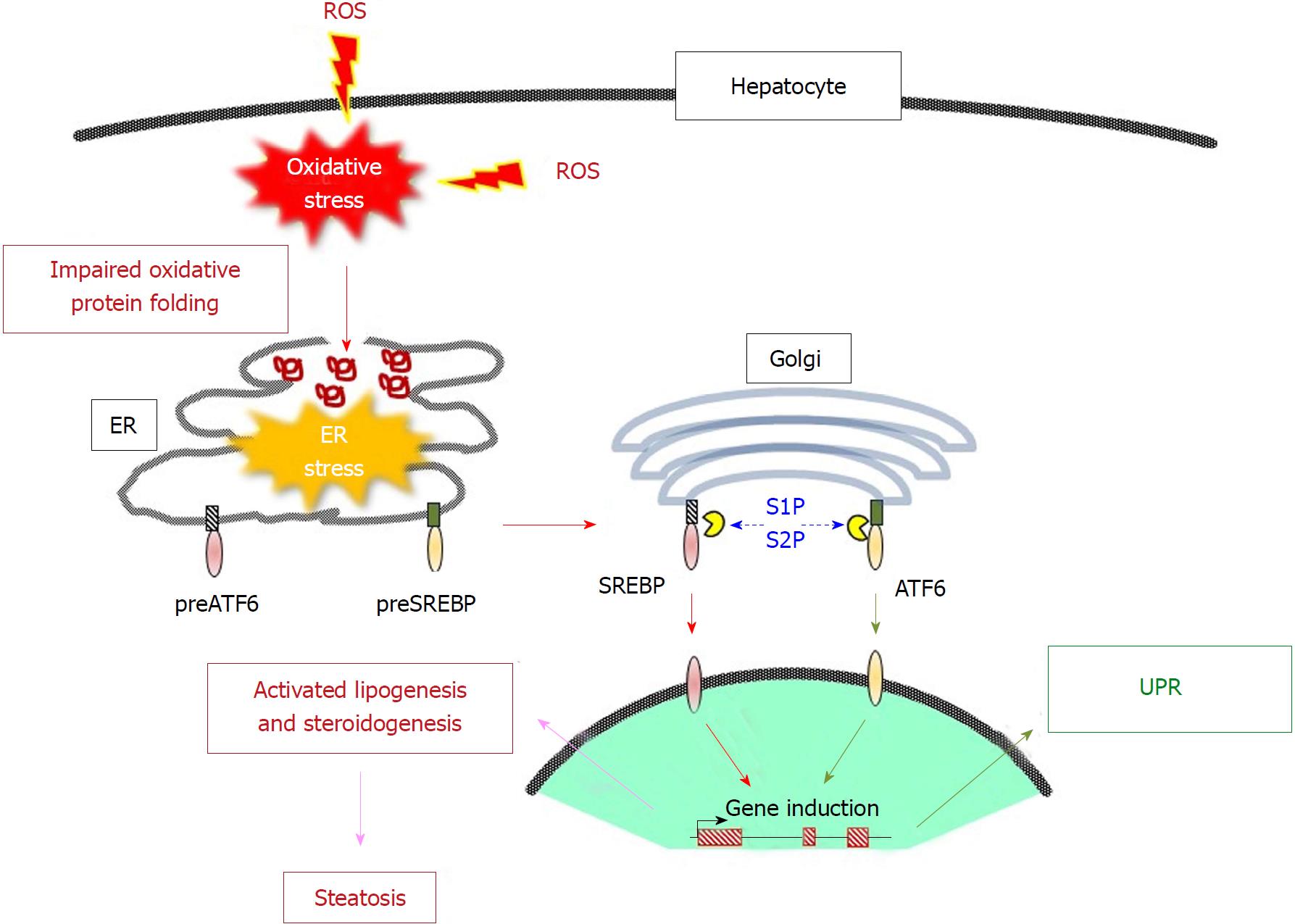Copyright
©The Author(s) 2018.
World J Biol Chem. Oct 18, 2018; 9(1): 1-15
Published online Oct 18, 2018. doi: 10.4331/wjbc.v9.i1.1
Published online Oct 18, 2018. doi: 10.4331/wjbc.v9.i1.1
Figure 3 Coordinate action of oxidative stress and endoplasmic reticulum stress in liver steatosis.
Excessively produced reactive oxygen species (ROS) cause the misfolding of proteins in the endoplasmic reticulum (ER), which leads to ER stress. The precursor forms of activating transcription factor 6 (ATF6) and sterol regulatory element-binding proteins (SREBPs) in the ER membrane are translocated to the Golgi body by an independent mechanism but are proteolytically activated there by site-1 protease (S1P) and S2P. The transcriptionally active ATF6 and SREBP then move to the nucleus. While ATF6 exerts a protective function by activating the genes involved in the unfolded protein response, SREBPs activates genes that are involved in lipogenesis and steroidogenesis, which may lead to the development of nonalcoholic fatty liver disease. ROS: Reactive oxygen species; ER: Endoplasmic reticulum; ATF6: Activating transcription factor 6; SREBP: Sterol regulatory element-binding protein; S1P: Site-1 protease; UPR: Unfolded protein response.
- Citation: Fujii J, Homma T, Kobayashi S, Seo HG. Mutual interaction between oxidative stress and endoplasmic reticulum stress in the pathogenesis of diseases specifically focusing on non-alcoholic fatty liver disease. World J Biol Chem 2018; 9(1): 1-15
- URL: https://www.wjgnet.com/1949-8454/full/v9/i1/1.htm
- DOI: https://dx.doi.org/10.4331/wjbc.v9.i1.1









